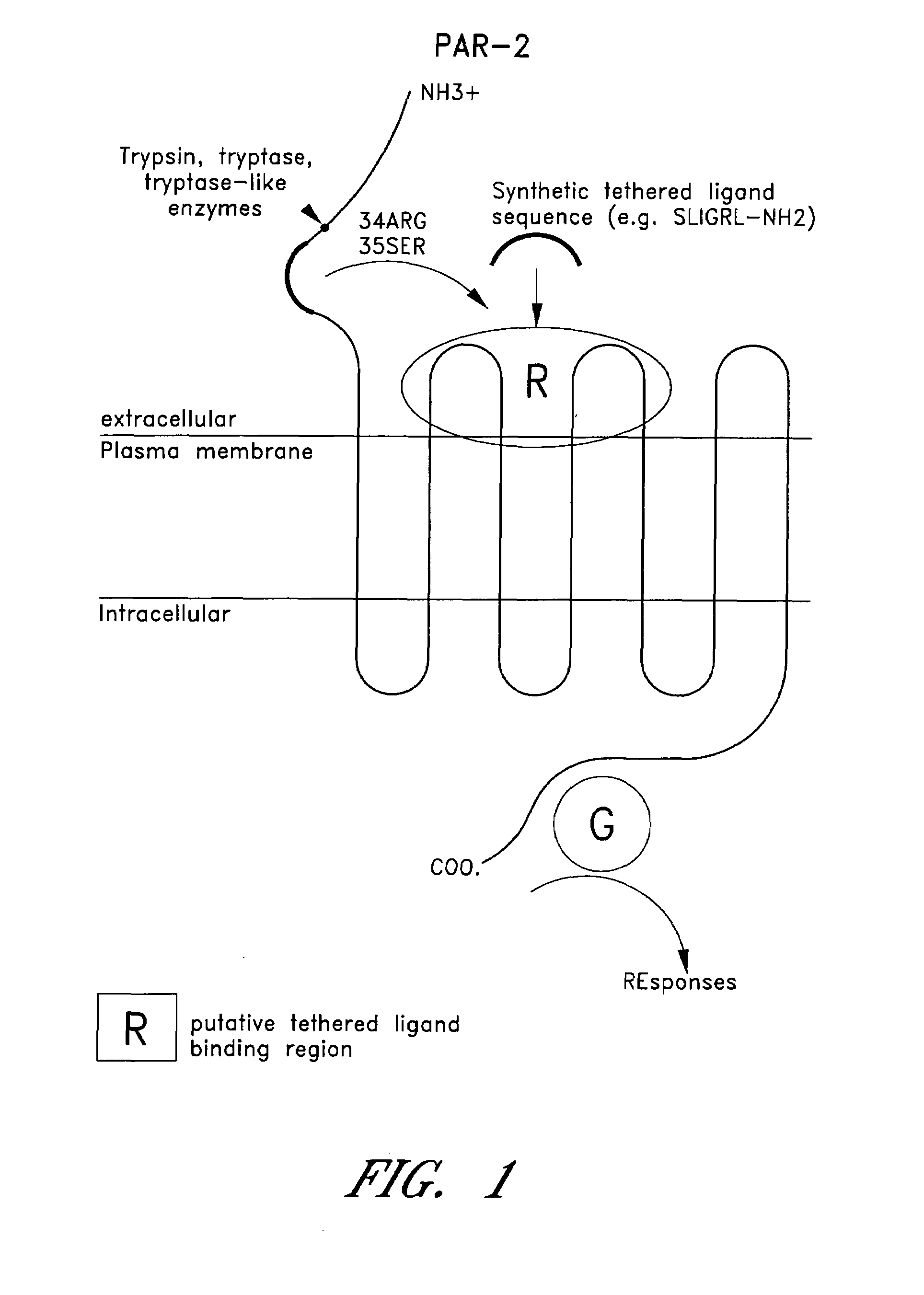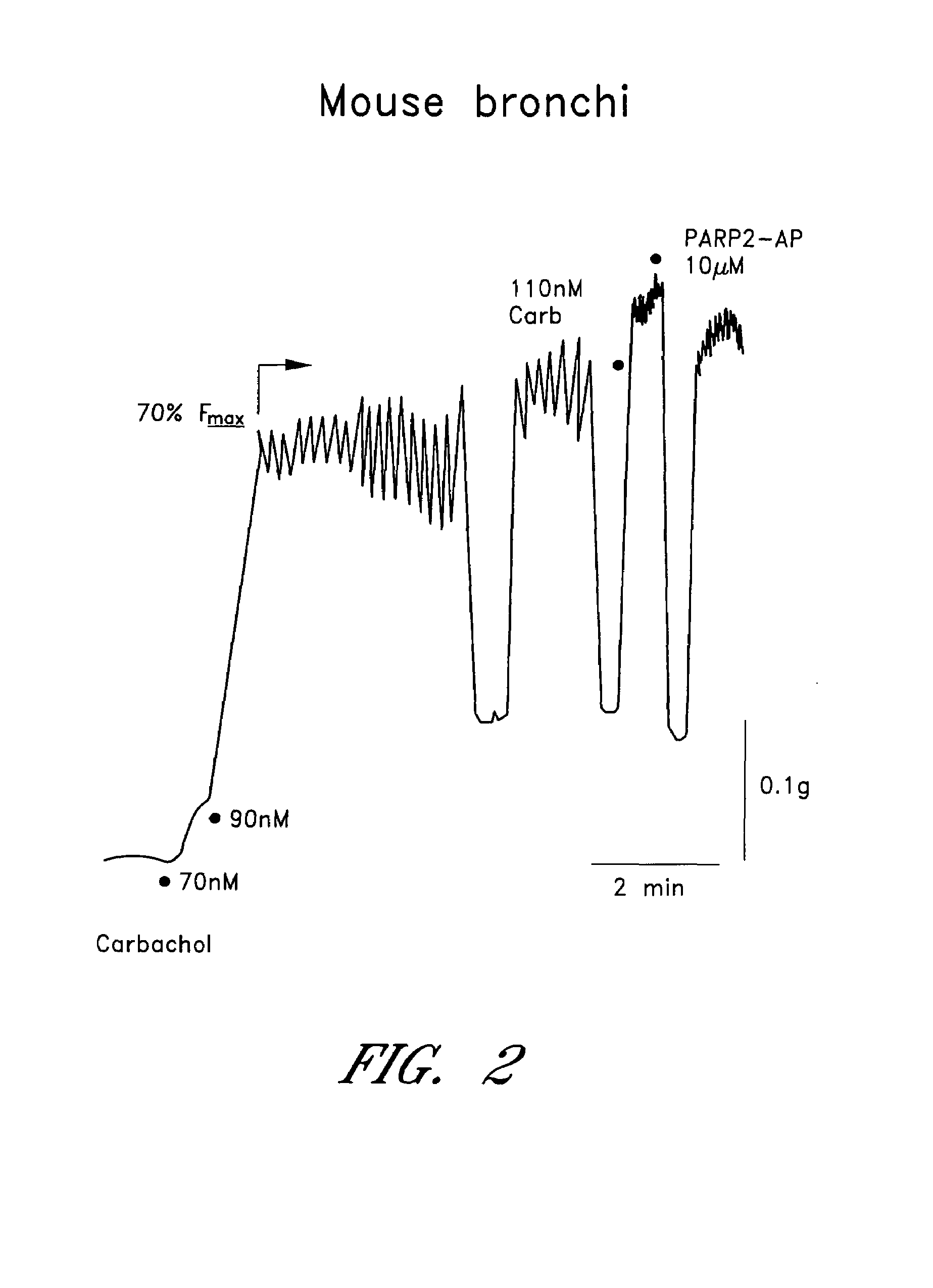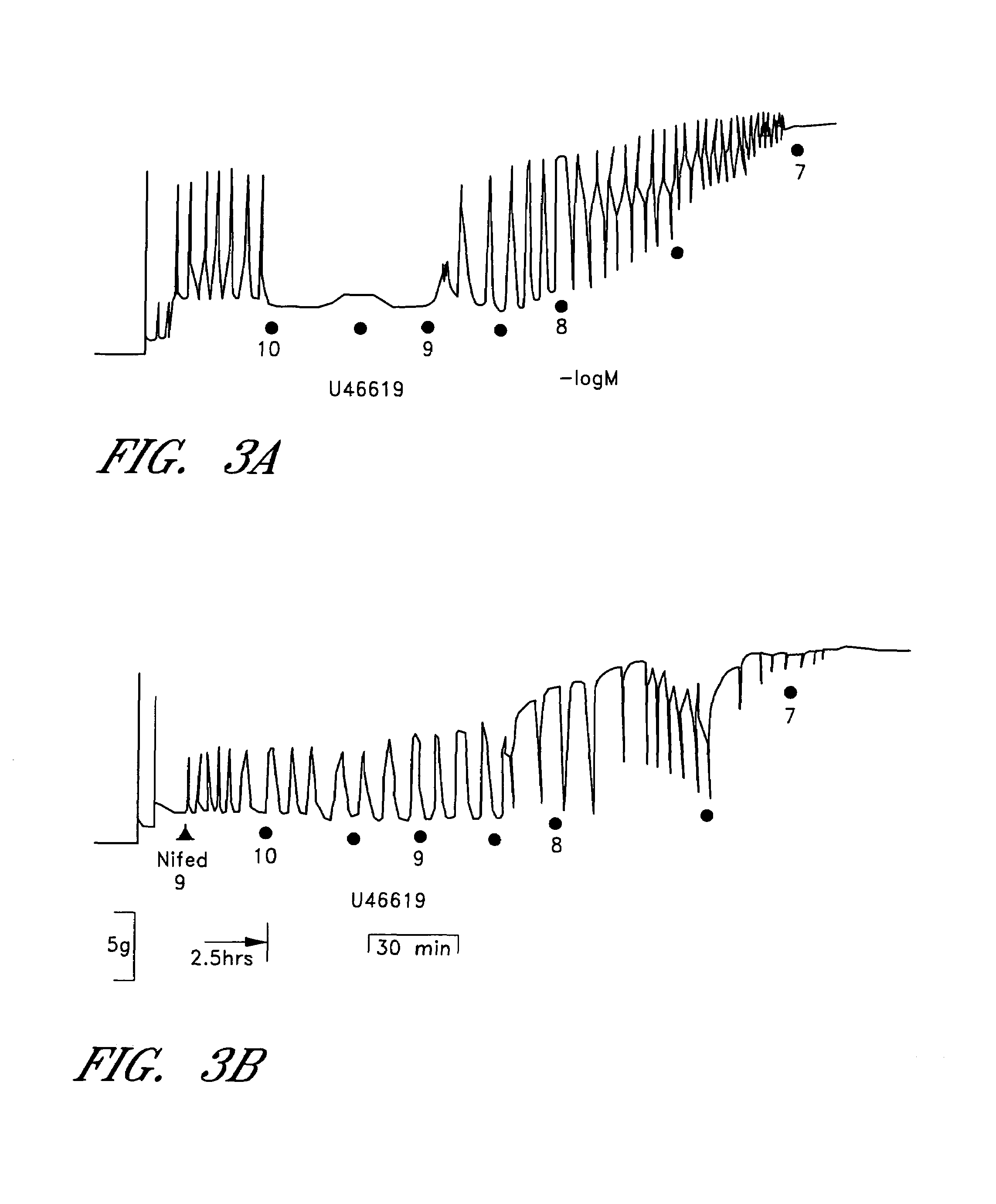Method of treatment and agents useful for same
a technology of agents and airways, applied in the field of methods of treatment and agents useful for same, can solve the problems of airway thickening and becoming obstructed, unknowing the causes of some people's airway diseases, and the inability to effectively defend the airway of patients who develop the disease, etc., to achieve the effect of inhibiting s bronchoconstriction and/or inflammation
- Summary
- Abstract
- Description
- Claims
- Application Information
AI Technical Summary
Benefits of technology
Problems solved by technology
Method used
Image
Examples
example i
Materials and Methods
Chemicals
[0121]Acetylcholine chloride, bovine serum albumin, bradykinin triacetate, carbachol, cycloheximide, haemoglobin (bovine plasma), histamine dihydrochloride indomethacin, (−)-isoprenaline, NG-nitro-I-arginine, substance P (acetate salt) and α-thrombin (bovine serum) were obtained from Sigma (MO, U.S.A.). Actinomycin D, apamin, aspirin, brefeldin A, carbaprostacyclin, isobutylmethyl xanthine (IBMX), prostaglandin ethanolamide, 9,11-dideoxy-9α 11α-methanoepoxy-prostaglandin F2α (U46619), prazosin hydrochloride and nifedipine were from Sapphire Bioscience (N.S.W., Australia). Trypsin (bovine pancreas) was from Worthington Biochem (NJ, U.S.A.) and SLIGRL—NH2(SEQ ID NO:2), SLIGKV—NH2 (SEQ ID NO:3) and SFLLRN—NH2 (SEQ ID NO:1) were obtained from Auspep (Vic, Australia).
[0122]Stock solutions of haemoglobin (1 mM) were dissolved in 0.9% w / v NaCl and then reduced with sodium dithionite (Na2S2O4). Excess Na2S2O4 was removed by passing the solution through a Sephad...
example 2
Activation of PAR in Bronchi of the Guinea-Pig and Mouse
[0131]Guinea-pigs of either sex (250–300 g) were killed in initial experiments by CO2 asphyxia, and in later experiments by a blow to the head. Where a blow to the head was used, great care was taken to ensure that the airways did not aspirate blood. Mice (Balb / c, male and female, 20–25 g) were killed by cervical dislocation and exsanguination. In both cases, the left and right bronchi were exposed and carefully dissected free from surrounding connective tissue using a dissecting microscope, excised and placed in cold, physiological bicarbonate-buffered Krebs solution of the following composition (in mM): (Na+ 144, K 5.9, Ca2+ 2.5, Mg2+ 1.2, Cl− 128.7, HCO3− 25, H2PO4− 1.2, SO2− 1.2 and glucose 11 (Stork and Cocks, 1994a). This solution was continuously gassed with a mixture of 95% v / v O2, 5% v / v CO2 to maintain pH at 7.4 and adequate pO2 of the solution. An approximately 3 mm long ring was cut from each bronchus. In order to m...
example 3
Effect of Nifedipine
[0137]The effect of the L-type voltage-operated Ca2+ channel inhibitor, nifedipine, on the bioassay system for bronchodilators in the mouse was also examined. Results for the human coronary arteries are shown in FIG. 3. Nifedipine (10 nM; see panel D) blocks both the spontaneous contractions and those which develop in response to U46619. Such treatment allows more accurate and valid measurement of relaxations at pre-set levels of now stable active force (Stork and Cocks, 1994a). Nifedipine (0.3 μM) also abolished the phasic contractions of the bronchi to carbachol, and resulted in the maintenance of stable levels of tonic, active force at any predetermined level. These results are shown in FIG. 4. Development of similar spontaneous activity to that shown in FIG. 3 was observed. However, even with such activity present, relaxation in response to both PAR2-AP and trypsin appeared to have occurred since active force remained constant for the time taken to obtain the...
PUM
| Property | Measurement | Unit |
|---|---|---|
| time | aaaaa | aaaaa |
| internal diameter | aaaaa | aaaaa |
| internal diameter | aaaaa | aaaaa |
Abstract
Description
Claims
Application Information
 Login to View More
Login to View More - R&D
- Intellectual Property
- Life Sciences
- Materials
- Tech Scout
- Unparalleled Data Quality
- Higher Quality Content
- 60% Fewer Hallucinations
Browse by: Latest US Patents, China's latest patents, Technical Efficacy Thesaurus, Application Domain, Technology Topic, Popular Technical Reports.
© 2025 PatSnap. All rights reserved.Legal|Privacy policy|Modern Slavery Act Transparency Statement|Sitemap|About US| Contact US: help@patsnap.com



